The VechainThor blockchain consists of a two-token system. The Vechain Token (VET), which will act as a store and transfer of value and VechainThor Energy a.k.a VeThor (VTHO).
In this guide, we will take a look at VeThor (VTHO), the use cases of VTHO, how you can earn VTHO and how you can buy and sell VTHO on the open market.
VeThor (VTHO) – the gas of the Vechain ecosystem
VTHO is needed to pay for writing data to the VechainThor blockchain. This means that every transaction (sending tokens, or sending data to a smart contract) has to be paid for in VTHO.
The amount of VTHO that is needed for a transaction depends on the size of the data you want to send. A simple VET transaction costs you around 30 VTHO, while sending a transaction filled with data to a smart contract can cost 1000 VTHO.
Reading from the blockchain is free for everyone and does not require VTHO.

When you check blockchain explorers you will see that it states “gas used”. 1000 gas currently equals 1 VTHO as defined using the VTHO/kgas variable setting.
The relationship between VET and VTHO
Both VET and VTHO are essential for the VechainThor blockchain to function properly.
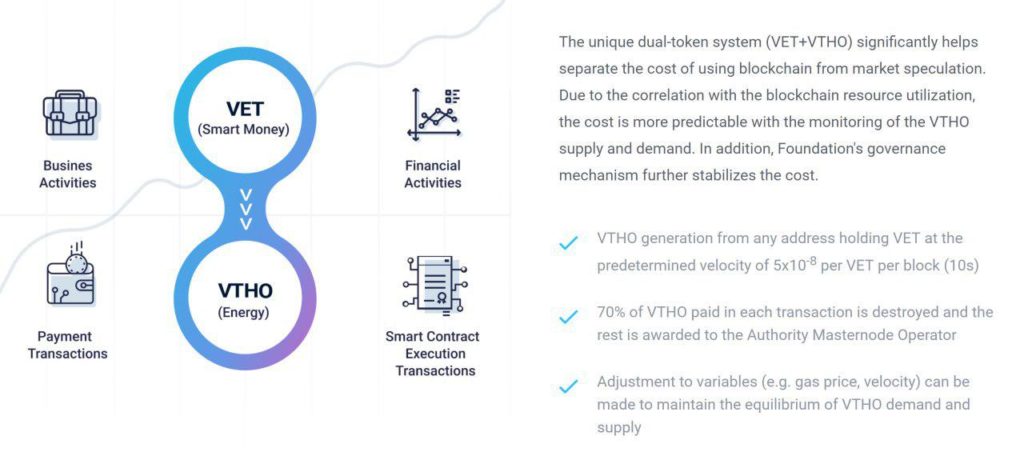
VET generates VTHO so by holding VET you will earn VTHO, which can then be used to pay for your transactions.
Without VET, there is no VTHO generated. Without VTHO, there is no way to pay for VET transactions.
VeThor (VTHO) – Generation rate
Each VET will create 0.00000005 VTHO with every block that is created (a new block gets added to the chain 10 seconds). This translates to a generation rate of 0.000432 VTHO generated per VET per day. A user that owns 10K VET in his wallet will earn 4.32 VeThor each day.
This is the default VTHO generation rate, which can increase, but not decrease over time. To have the generation increased a vote has to occur in which all stakeholders (token owners, the Foundation, enterprises, etc.) can vote.
At the time of writing, 37.5 million VTHO is generated each day.
On use, 70% of the VTHO gets destroyed, while the remaining 30% is paid out to the Authority Node as a reward for validating the transaction.
VTHO generation reward types
Next to the default generation rate, which is also called reward type 1, there are three other methods which allow you to earn more VTHO on top of the base generation rate:
Reward type 1
Requirements: Own Vechain, it does not matter how much you have. No need to stake them into a node.
Thor Power generation rate: Currently set to 0.000432 thor generated per 1 VET held per day. This number might increase in the future, but not decrease.
Reward type 2
Requirements: Own an authority node
Thor Power generation rate: 30% of all Thor Power consumed by blockchain transactions will be rewarded to the 101 owners of a Thrudheim Masternode. 70% gets burned on use.
Reward type 3
Requirements: An authority node or economic node (excluding the smallest VeThor X node)
Thor Power generation rate: The Vechain foundation has set up a special pool called the Foundation Reward Pool that has 15 billion VET in it. The Thor Power generated by this pool will be divided amongst those eligible for reward type 3.
Notes:
- The foundation pool will decrease by 2,5 billion VET every 6 months, until further notice.
Reward type 4
Requirements: An authority node or X economic node.
Thor Power generation rate: The Vechain foundation has set up a special pool called the Foundation X Reward Pool that has 5 billion VET in it. The Thor Power generated by this pool will be divided amongst those eligible for reward type 4.
Notes:
- The foundation x pool will remain at 5 billion VET, until further notice.
To learn more about Vechain Nodes please click here.
Keeping transaction costs stable
The whole idea of a two coin system is that this allows the transaction fees to remain relatively stable, compared to a system where there is only one coin.
Taking Ethereum as an example, during last years bull run the price of Ethereum rose to over $1000. This caused the average transaction fee to become over $1 dollar, compared to its current $0.10 fee. This is a big problem for anyone wanting to use the Ethereum blockchain!
The cost of a transaction can be calculated using the following formula:
Transaction cost = VTHO price x amount of VTHO needed
The key takeaway from this is that vtho price is something very different from the transaction cost
This allows for two mechanisms to keep the transaction costs stable:
- Increase the VTHO generation rate
By increasing the VTHO generation rate, more VTHO will hit the market, potentially lowering the VTHO price and bringing the transaction cost down.
When this occurs, VET owners will still generate the same amount of value from their tokens, since the VTHO price might go down, but the amount of VTHO they are generating goes up!
2. Change the amount of VTHO needed
By increasing or decreasing the amount of VTHO that is required for a transaction the transaction cost can also be influenced.
When increasing the amount of VTHO needed, the transaction cost will increase. This will also result in more VTHO being burned. More VTHO being burned will increase the demand for VTHO, further increasing the VTHO price and the cost of a transaction.
On the other side, lowering the amount of VTHO needed, the transaction cost will decrease and less of the generated VTHO supply will be burned.
Both changes have to be agreed upon by all stakeholders (enterprises, dApp owners, VET holders and Authority Nodes) of the ecosystem. Using a decentralized vote, everyone can vote if they agree to the change. Only when the majority agrees the Foundation will decide to change the parameters.
This two coin system gives users of the ecosystem multiple options to pay for their transactions:
- Enterprises wanting to use the blockchain can buy the VTHO they need from the open market, they don’t need to hold VET.
- They can however also decide to buy VET. Using this VET they can then generate VTHO which they can use to pay for their blockchain operations.
- Users can buy VET and sell the VTHO they generate on the open market.
With the adoption of the Vechain blockchain, the need for VTHO will rise. Because of this, the demand for VET will also rise.
How to send VTHO from your mobile wallet
When using the mobile wallet you will notice that VTHO is not listed in your list of Assets. The amount of VTHO you have can be viewed at the top near your wallet name and address.
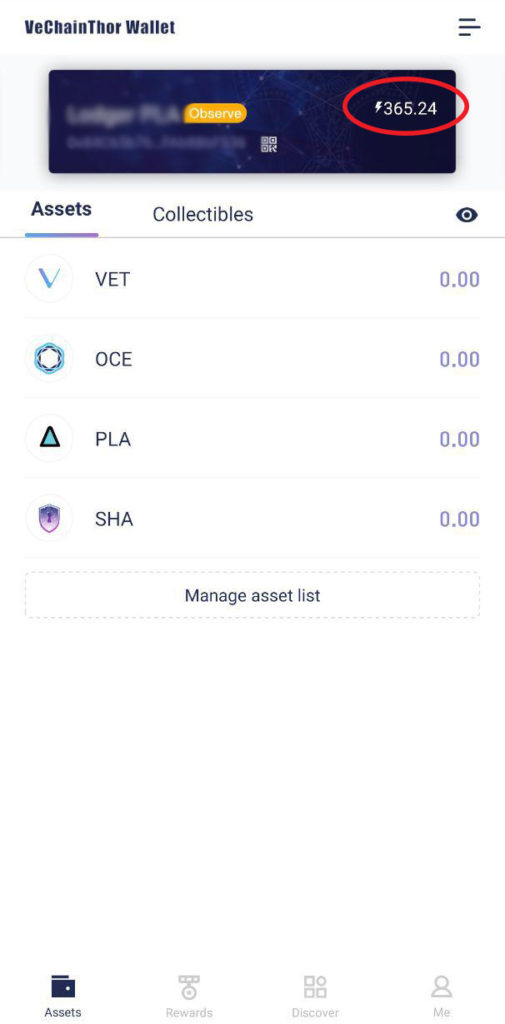
By clicking on the little lightning icon you go to a page that shows all your VTHO transactions.

It also allows you to transfer VTHO to a different wallet address.
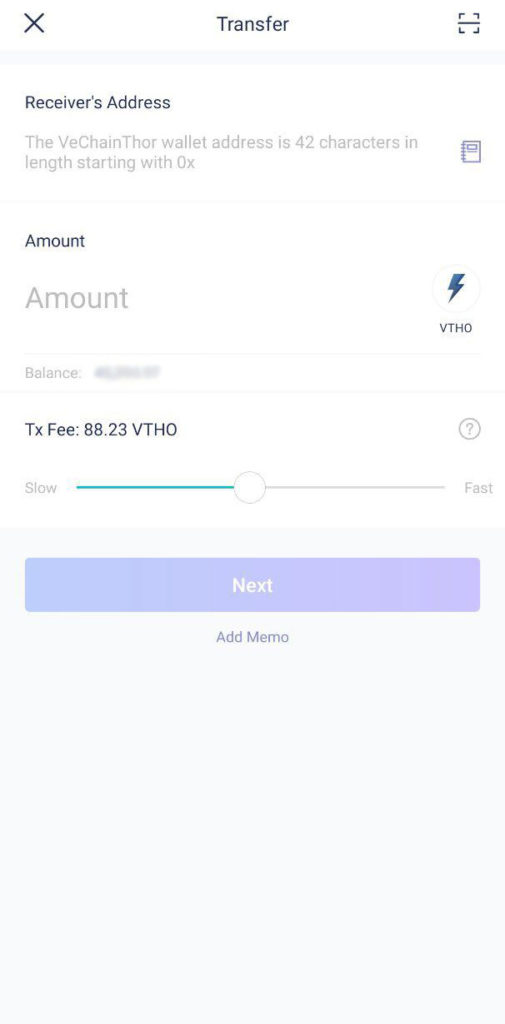
Buying and selling VeThor (VTHO)
You can currently buy or sell VTHO using the centralized oceanex.pro exchange, or the decentralized vtho.exchange.


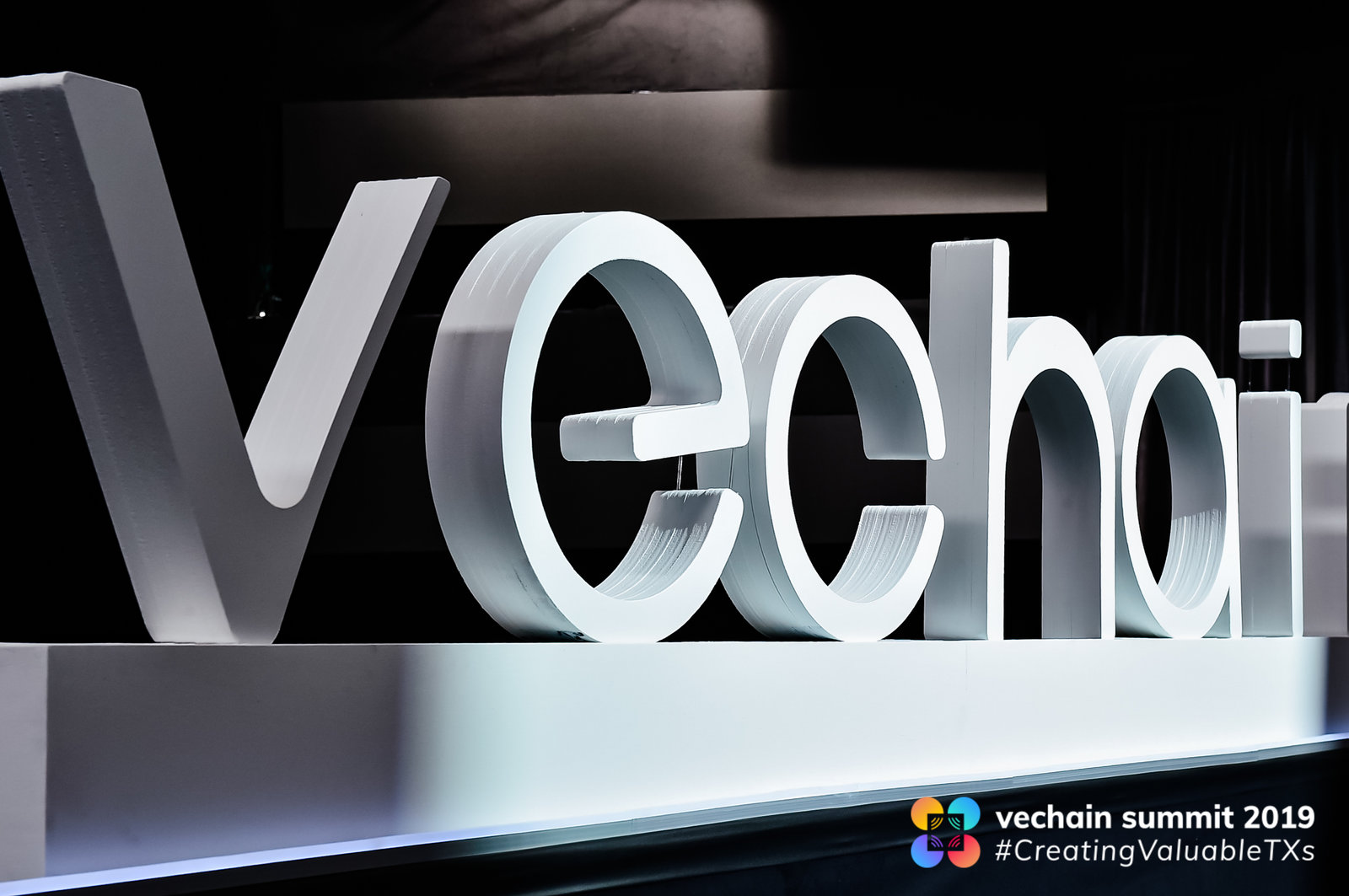

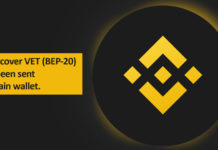
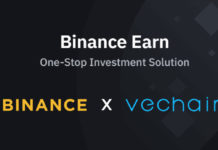









Wow, can you translate all this in simple English? Perhaps a video to some of us that are simple minds. Just like Sunny Lu said, I am like his mother and understand about as much about this. What I do know I like and so I invested.
Thanks great read!
wich mean vtho will always down price or be in low price at least??
hi, i have moved 1500 vet to my trust wallet.im trying to move it bk to binance platform,but, it says not enough vtho for transfer ,do i have to wait till ithe gas multiplies up to the required levl
good read, where is the best wallet to earn VTHO?
i guess if your in Binance.us the reward level 1 does not work. not getting any VHTO.
16k VET
100k VHTO.
no changes in quantity.
You have to lock it in the Flexible Savings vault to get VTHO om Binance. Bitrue gives it to you automatically.
AMEN. this is some goddamn BULLSHIT
You do not need to lock anything on Binance.us to get the rewards. Binance.us distributes the VTHO reward close to mid-month. The Staking page explains how the reward is allocated and what is required. You just need to own VET. The VTHO reward allocated to you is based on total VET held at Binance.us, and you receive your percentage.
This is ridiculously complicated for no reason. I’m stuck with Vet I’d like to exchange but can’t because I don’t have enough vtho for the exchange. All you’re doing is forcing people to hold your coin when they don’t want. I’d have never bought this if I’d known in advance. There should be a warning before purchasing that this is going to be the case.
How much vtho do you need for the exchange? I might be willing to buy your Vet off you if you don’t value it.
It’s one of the things I don’t like about some coins, except I do like VET and VTHO…
I moved some OMG to a wallet, big mistake. It cost so much ETH because OMG is an ETH-20 token apparently. I can’t move it out because I don’t have any ETH… when I moved it to the wallet, it was translated by the exchange into ETH and the GWEI needed. What BS. Then there is ONT / ONG… what a bunch of BS…
I moved ONT which I had, to my wallet, then realized to even stake it, I needed ONG, but I can’t buy ONG on the wallet, nothing in the wallet can be exchanged without something else I cannot get, and I cannot get ONG on the exchange. So for now, both my OMG and ONT sit stuck in my wallet till I bone up some ETH or ONG. I am more inclined to never buy either again so I don’t help facilitate this nightmare.
Thankfully, when I moved my ADA to my wallet to stake that, I was charged almost nothing… less than 1 ADA, but to stake I discovered it would be locked for as long as I staked in someone else’s wallet – no thanks. I moved it back to the exchange no hassle, using ADA – tiny fee again. And instantaneous, it was really fast.
I should mention I gifted some VTHO to 2 friends to start their trading experience, along with some DOGE and ZIL, all went over very fast and smoothly. So VTHO or VET transfer is fairly quick. ZIL was also cheap to transfer.
You can swap ONT for ONG on the ONTO wallet. No fee and it’s so simple. Just click the swap icon that is two small arrows pointing in opposite directions.
Can anyone please clarify? If VTHO is generated by holding VET & burned at the same time through utilization, how is the price of the gas is increasing faster (may be people buying more VTHO from exchange)? considering new generation of VTHO is only through VET & endless generation of VTHO. Considering VTHO is traded, an enterprise will directly buy VTHO without having to buy VET. comparing the amount of VTHO generated by holding VET, people can buy VTHO directly. I want both their prices to increase 🙂 but trying to understand here.
People like me invest in VTHO because it’s a low priced coin with lots of potential upwards price movement, but it is risky. VTHO will be created perpetually unlike a lot of other coins.
VeChain appears to want people to invest in VET and to buy VTHO mostly for transactions. I own both, but I own far more VTHO because it was so well priced, and I treated it like a penny stock.
Reading more of these articles, I am not sure VTHO will be a high profit coin or if it will always be price bound, to keep the transaction fees low.
Personally, I think this entire 2 coin strategy is nonsense, and I hate it. In general, I do not support any 2 coin systems, because it puts people in a bind to acquire both, some of which are not available everywhere. I can buy ONT, I can’t buy ONG for example. I like ADA or ZIL because you use the coin for everything.
I prefer managing cost of transaction by reducing the fraction of the main coin required to perform the transaction. Don’t control the cost of transaction with a secondary coin, just move the decimal point.
Ex:
Move 1000 VET using 1 VET, or if VET gains in value, change it to Move 1000 VET using 0.001 VET. Not a big deal really.
Problem is with coins like ETH which are highway robbery – the fees are absurd, and you pay way too much to move coins. But that’s also due to the inefficiency of ETH.
I don’t understand what ur problem is. Stake VET on their wallet or leave on BNB. You get the VTHO for free. You swap VTHO to stable coin when the price gets high. More VTHO in the exchanges helps to lower the price.
Sounds like a rip off to me
Actually… maybe it’s not a rip off! I’m new at this, so what do I know! But, if I understand what I’m reading here… you only need to hold a small amount of this VET and it keeps generating VTHO which you can sell! If I’m understanding correctly… will this not eventually lead to making a profit? You never have to sell the VET itself, and it keeps producing new salable product… (the VTHO). Please correct me if I am not understanding Correctly!!
You can hold VET and it will generate VTHO as long as where you hold it credits you the VTHO. I didn’t even know VET generated VTHO till I did some digging and the exchange distributed some VTHO to my account.
The creation rate is very small, so you would have to hold a fair bit of VET to make a noticable impact on your VTHO holdings…. also, per your question, you’re not obligated to immediately sell your VTHO if you don’t want to incur tax events by selling – but it is considered Income in many countries when you get the distribution to your account. Yes, it’s Income, just like if you had sold it. In fact, because you received it, it gets taxed twice – once as Income, once as Sale / Profit, when you eventually sell it if you ever do.
It seems that its a good idea if this coin was already in place of fiat currency. but its not. and its not a good way for this to get off the ground.
If it instantly replaced the world currency it would be great. I could see this as a very low inflation solution to currency. And a great investment for someone that wants to invest in currency.
but its not popular right now. I hope it is in the future. maybe some whales will buy in.
Correct me if I’m wrong please. VTHO is not for investing, if the price is never going to go up. As it will depend on the VeChain Foundation how they want to go about it. Lower the VTHO price, so transaction fees are low or reduce the number of VTHO required for a transaction when VTHO price goes up. It seems like my investing future is in the hands of the foundation if I choose to invest in VTHO and not VET. Is that right?
In some ways you’re right… I had a lot of money invested in VTHO only to see it evaporate today as the price plunged significantly. I didn’t sell so I haven’t lost anything, but this article and your comments make some sense. VTHO hit a high of 0.0240 less than 2 weeks ago, and it’s down at 0.0140 today.
I suppose the VeChain organization can alter the price by pushing out VTHO if they want the price of the transactions to be lower. But I got the impression from the article the production / distribution of VTHO was restricted to set rules. I think another factor is when are these coins released… first of the month, some time when a lower threshold figure is met?
I don’t think there is any problem with investing in VTHO, but it may be more risky than investing in VET… and it sounds like the VeChain org wants people to invest in VET, not VTHO. I currently have about 35% of my investment in VTHO, because it was a good value coin.
Correction, i didn’t mean devalue. The VeChain managers are deciding by how much they wish to reduce the transaction fees – they can require less VTHO or also put pressure on price of VTHO… not sure what they will decide.
Newbie question. How do you store VTHO? Can it be stored on Sync in conjunction with a Ledger or Trezor wallet VET App?
VTHO is a token, most wallets will allow you to store the coin “VET” and also the token. In some instances, like Tron on Ledger, you have to own Tron before you can have a token from that chain.
IMO
In a sense you have to look at this like VET is the oil field and VTHO is the oil. If you own an oil field you will generate oil. Transactions on the blockchain are automobiles on the road. The more automobiles on the road and the need for the oil increases, thus increasing the oil price and burning the oil so it is no longer usable. There is a “possibility” that there are enough automobiles on the road that the amount of oil produced will not be able to feed all the gas guzzlers out there, if this is the case than demand for oil increases and thus increasing the price. When they discuss the possibility of increasing the VTHO generation, they are adding another oil pump to the field so they can produce more and keep cost’s down. This doesn’t mean they are trying to devalue the oil but rather keep it economical. *Hypothetically* Lets say VET pulls an Ethereum and moons to 2K, no one wants to pay gas using something worth that amount, which in turn hurts the whole system. If VET is 2k in this example VTHO may only be $100, although “less valued” it allows the ecosystem to thrive with lower fees and continues transactional growth. And i don’t think anyone who bought oil for a penny will complain when its worth $100.
Wow. This is garbage.
You’ve effectively trapped owners of VeChain from exchanging & transferring their assets unless they purchase a minimum of another worthless asset.
It’s essentially a scam and I’m getting the fuck out. What a shame, it looked like it had potential.
I’m no longer receiving VTHO on binance. I still own vet but sold my VTHO about 6 months. Can you tell me why I stopped getting it?
Thanks!
I need VTHO smart contract, where do I find it please
News flash folks VET has real business applications. The Chinese government is starting up purchasing carbon offset credits in the next couple of months which is going to create millions of transactions a day. Even with the gas VET is the real deal, not a hopium scenario. . .
I can’t wait until VET goes back up to it’s high of $0.18 but what would it take for that to happen? And is it potentially possible for it to reach $1 or more?
Please let me know if you’re looking for a article writer for your weblog. You have some really great posts and I believe I would be a good asset. If you ever want to take some of the load off, I’d absolutely love to write some content for your blog in exchange for a link back to mine. Please shoot me an e-mail if interested. Thanks!
I believe this website contains some real great info for everyone. “The foundation of every state is the education of its youth.” by Diogenes.
Those are yours alright! . We at least need to get these people stealing images to start blogging! They probably just did a image search and grabbed them. They look good though!
Thanks for sharing excellent informations. Your website is so cool. I’m impressed by the details that you¦ve on this web site. It reveals how nicely you perceive this subject. Bookmarked this web page, will come back for more articles. You, my pal, ROCK! I found just the info I already searched everywhere and simply couldn’t come across. What an ideal web-site.
Have you ever considered creating an e-book or guest authoring on other websites? I have a blog centered on the same topics you discuss and would love to have you share some stories/information. I know my subscribers would enjoy your work. If you’re even remotely interested, feel free to shoot me an e-mail.